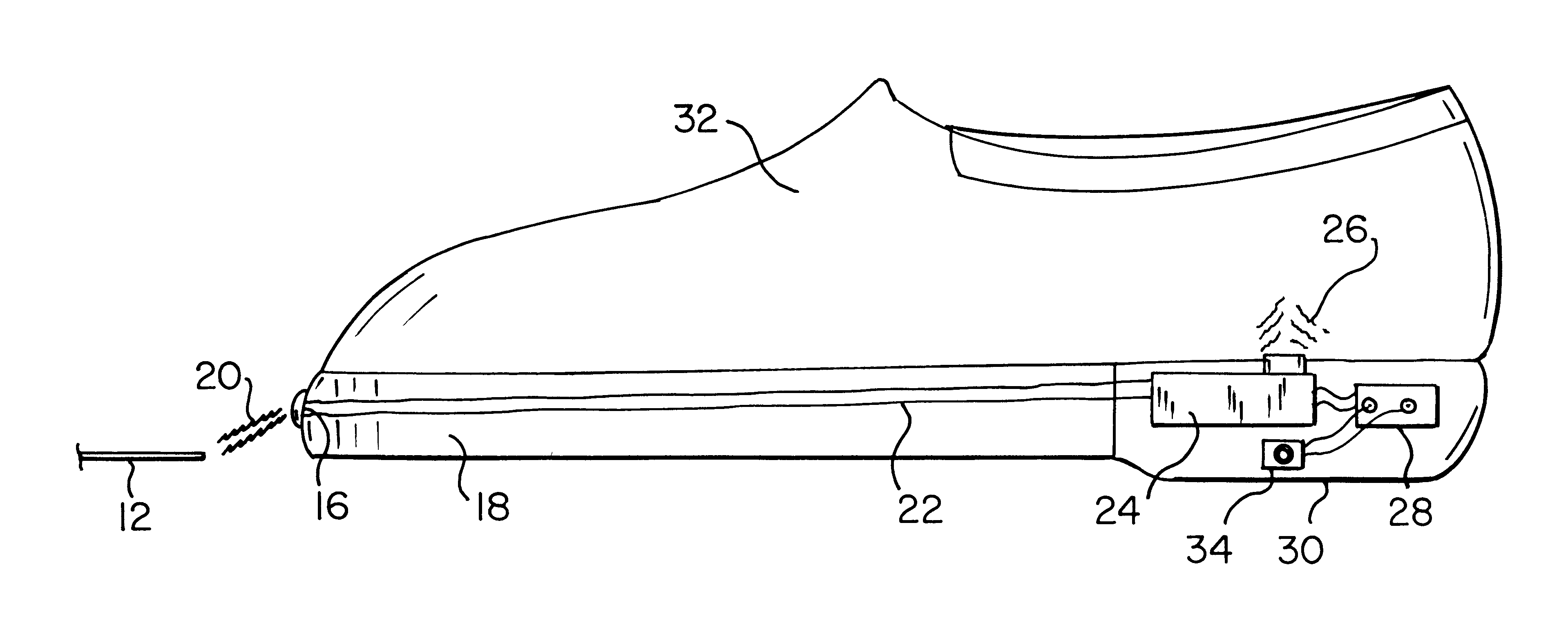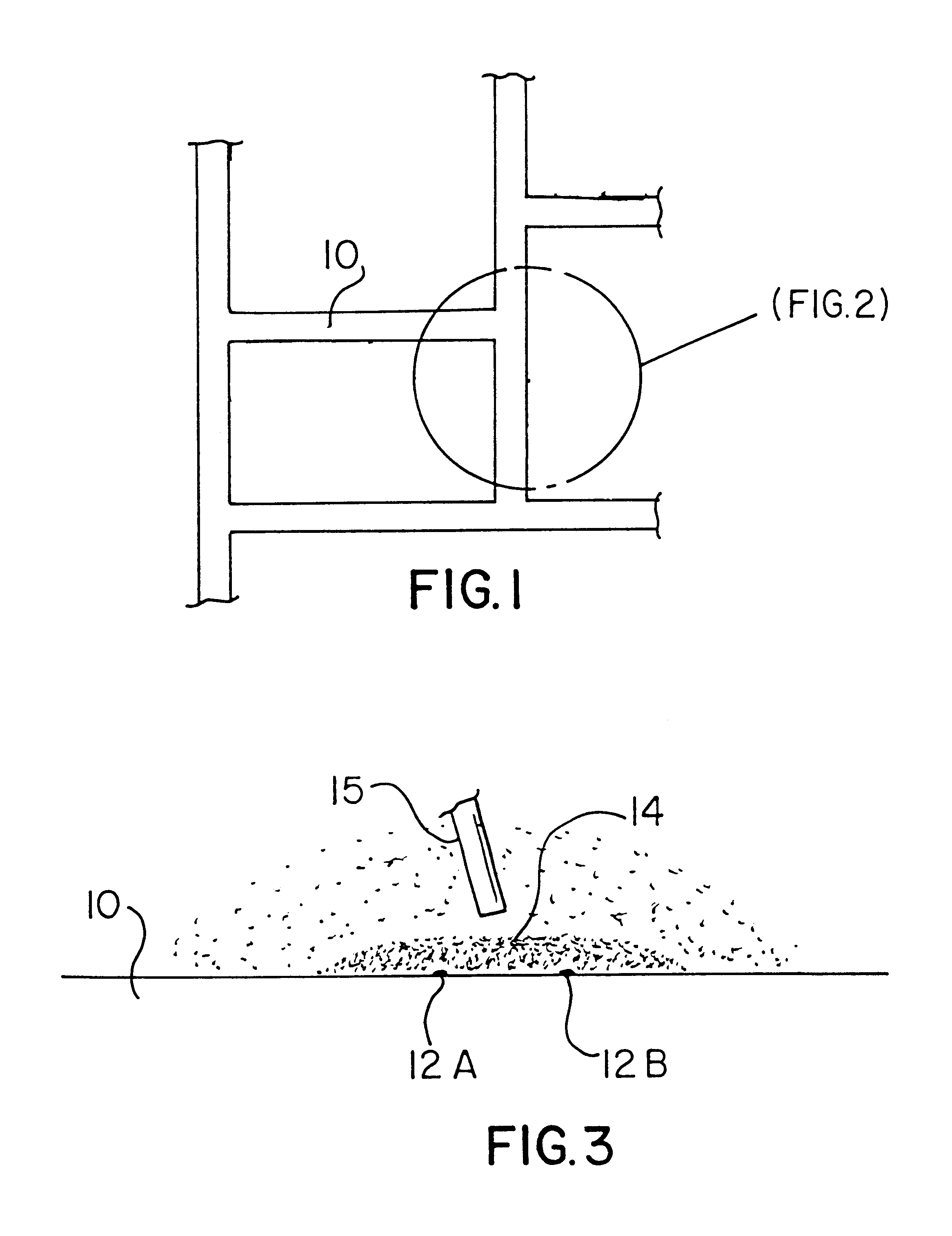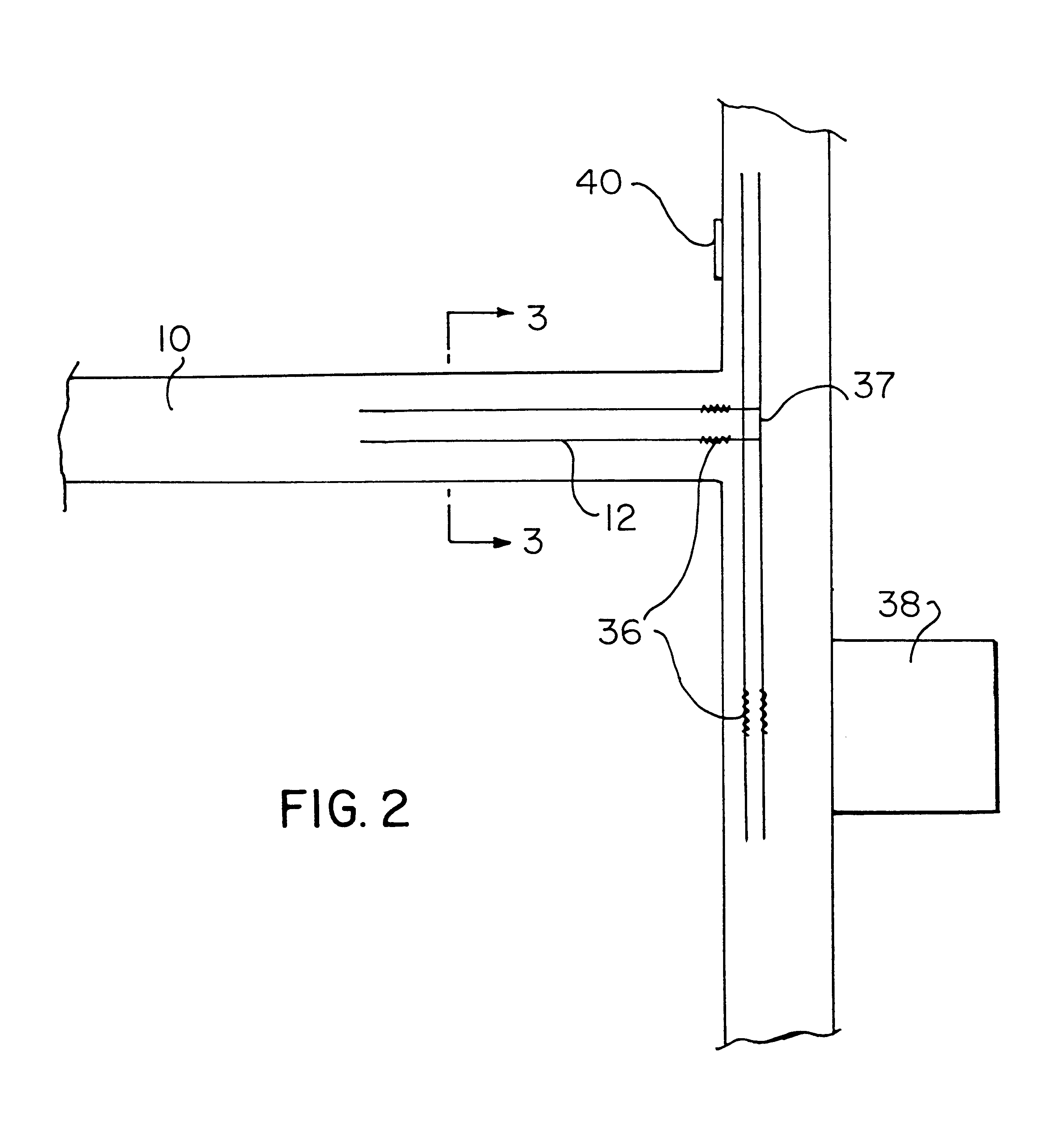System for guiding the visually handicapped
a technology for visually impaired people and systems, applied in repeater circuits, instruments, line-transmission details, etc., can solve problems such as unsatisfactory systems of this type, and achieve the effects of improving navigation efficiency, facilitating use, and alleviating the uneasiness of visually impaired persons
- Summary
- Abstract
- Description
- Claims
- Application Information
AI Technical Summary
Benefits of technology
Problems solved by technology
Method used
Image
Examples
Embodiment Construction
With reference to the overhead schematic view of FIG. 1, there may be seen a plurality of walkways 10 which may comprise walkways within public or private structures, residences, or walkways within an outdoor area, e.g., a downtown section of a city street. Embedded within each walkway or applied at substantially the surface thereof is a continuous electrical conductor 12 of substantially uniform electrical conductivity. See enlarged schematic view of FIG. 2. It has, in a preferred embodiment, been found that parallel pairs of metal conductors 12 will afford redundancy for purposes of the invention and will also enlarge the range of conductive material detecting means, as is set forth below.
Such sensors, and proximity sensors in general, operate upon a principle of response to changes in capacitance or inductance when introduced into a field 14 of a probe 15. See FIG. 3. When the necessary range setting of the probe is met, an alarm will trigger within a particular distance from the...
PUM
 Login to View More
Login to View More Abstract
Description
Claims
Application Information
 Login to View More
Login to View More - R&D
- Intellectual Property
- Life Sciences
- Materials
- Tech Scout
- Unparalleled Data Quality
- Higher Quality Content
- 60% Fewer Hallucinations
Browse by: Latest US Patents, China's latest patents, Technical Efficacy Thesaurus, Application Domain, Technology Topic, Popular Technical Reports.
© 2025 PatSnap. All rights reserved.Legal|Privacy policy|Modern Slavery Act Transparency Statement|Sitemap|About US| Contact US: help@patsnap.com



